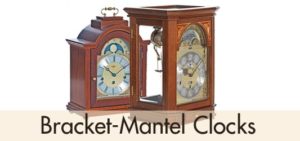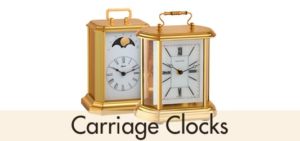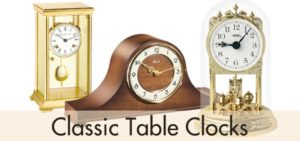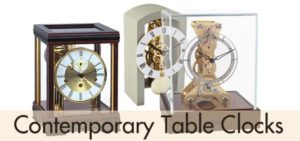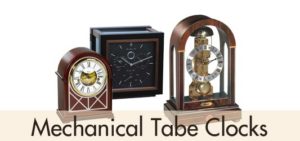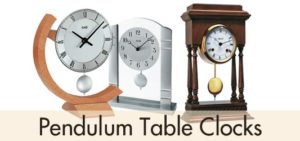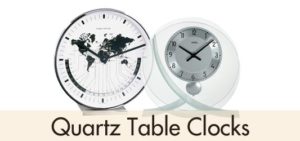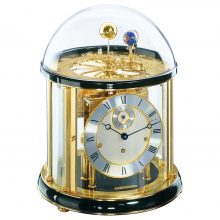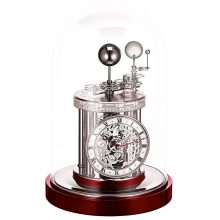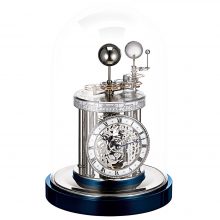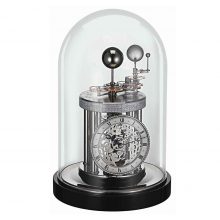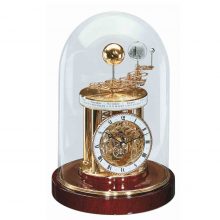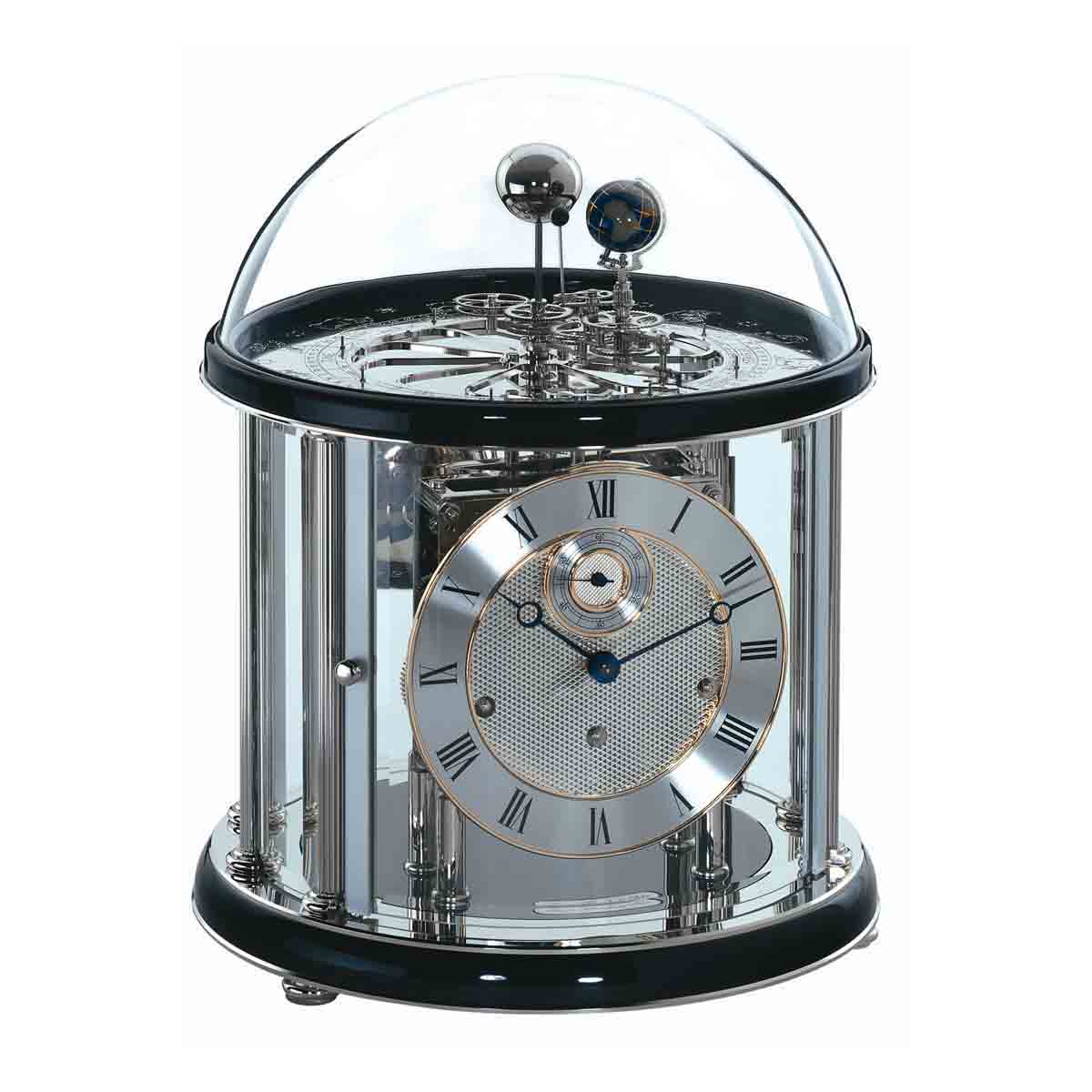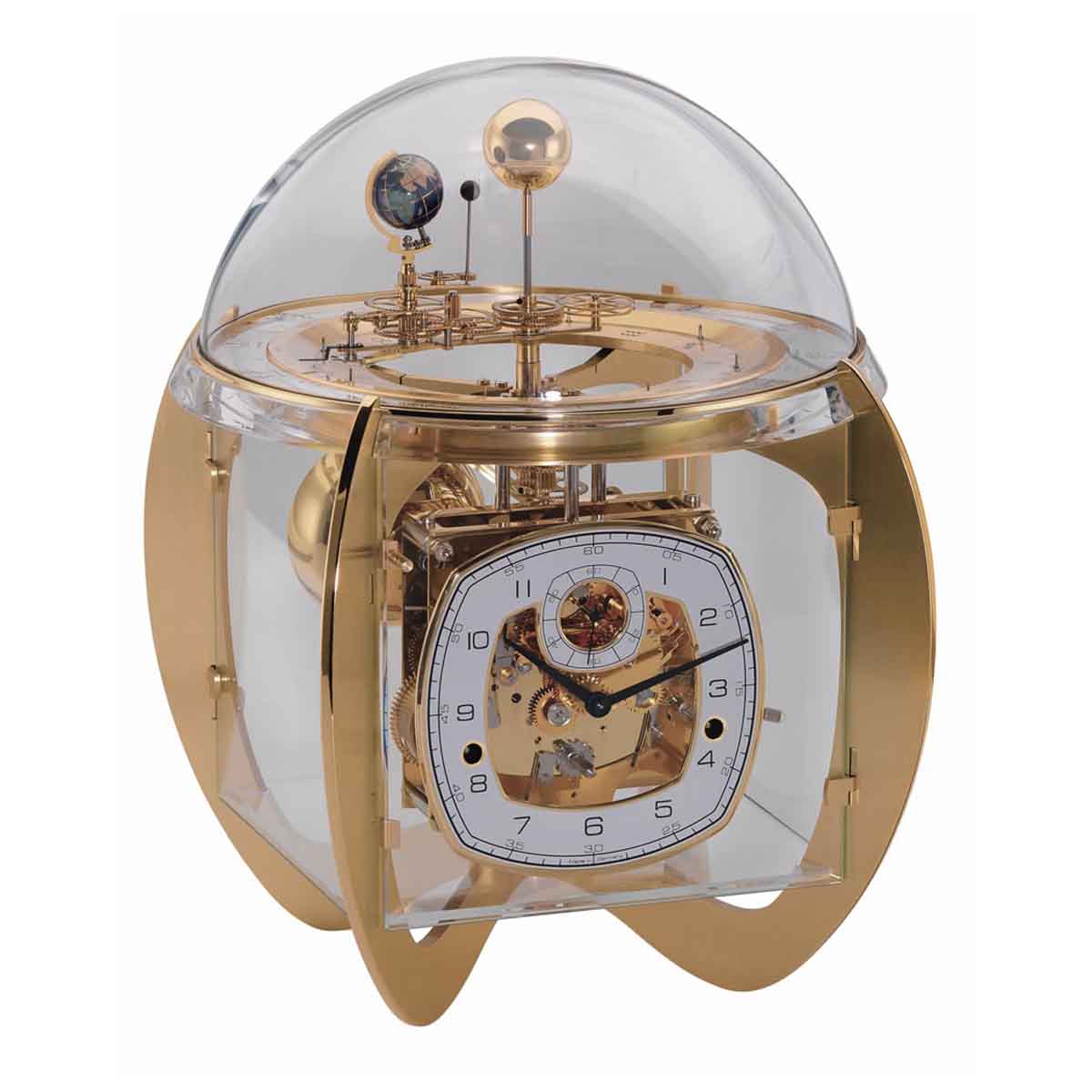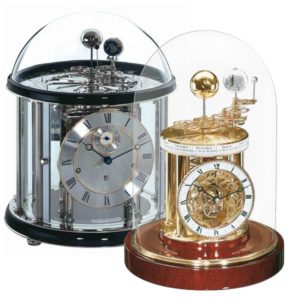
Astrolabium Clocks
Astrolabium clocks reproduce the annual orbit of the earth around the sun, with the earth rotating around its own axis once in 24 hours. The moon, in turn, revolves around the earth in 29.5 days completing a full rotation around its axis. This allows the reproduction of the different moon phases as they are visible from earth. In the course of one year, the earth passes all 12 zodiac signs, months and individual days which are indicated on the flat disc.
Astrolabe translates as “star-taker” – invented around 150BC, it is an early instrument used to observe the position and determine the altitude of the Sun or other astronomical objects; it was later used for navigation, from the Middle Ages until the 18th century, when it was replaced by the sextant.
Astronomical clocks – where an Astrolabe is added to the clock – were built as exhibition pieces to demonstrate clockmakers’ technical skill and their patrons’ wealth; they were built to impress as well as to enlighten. They became popular in the 18th century due to the interest in astronomy in the period, as well as the visual order they brought to the night sky.


